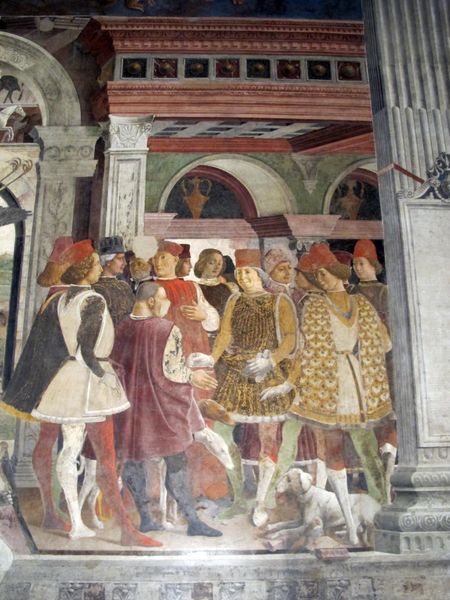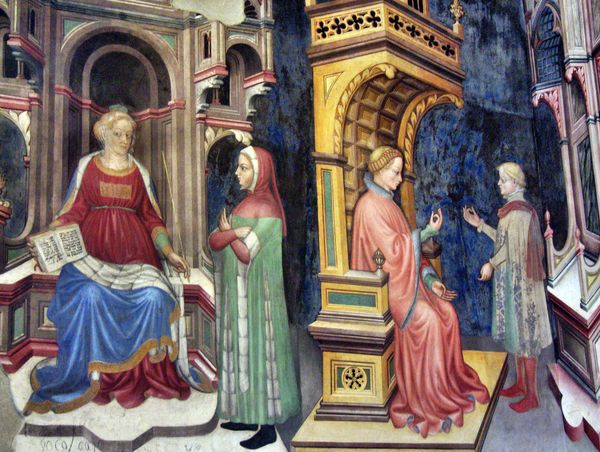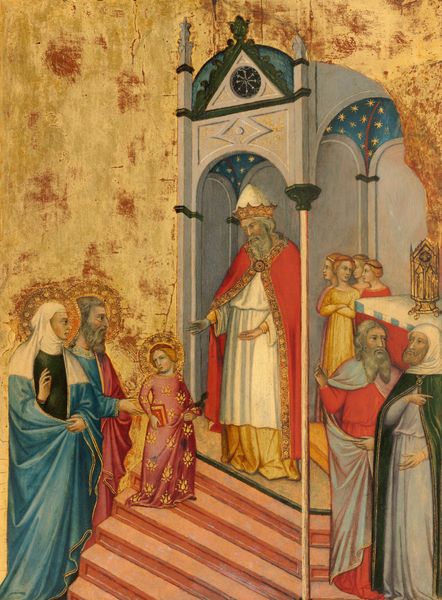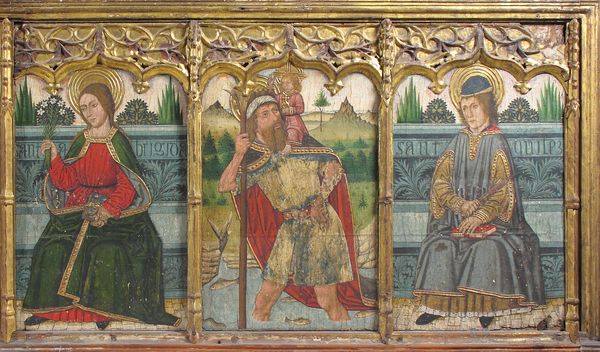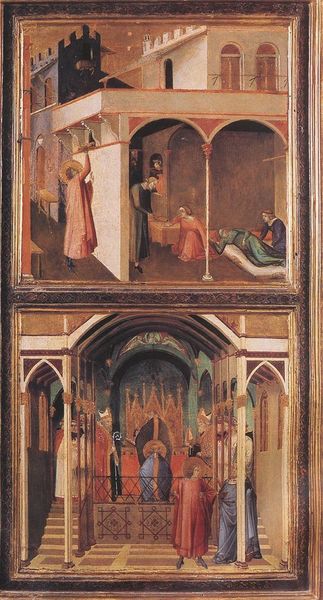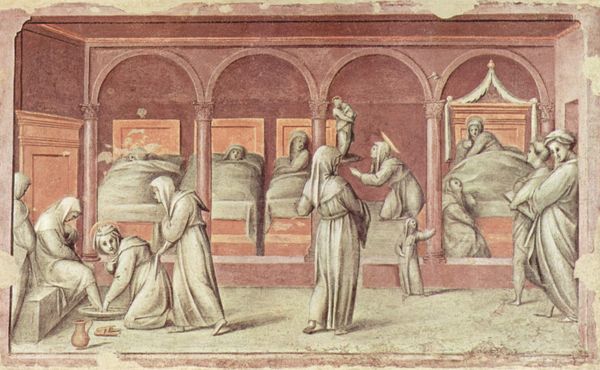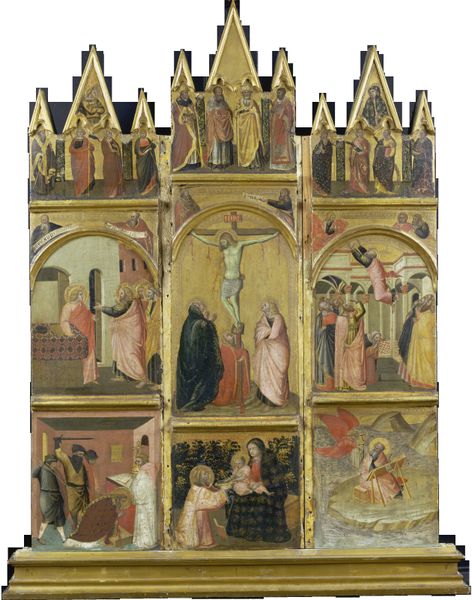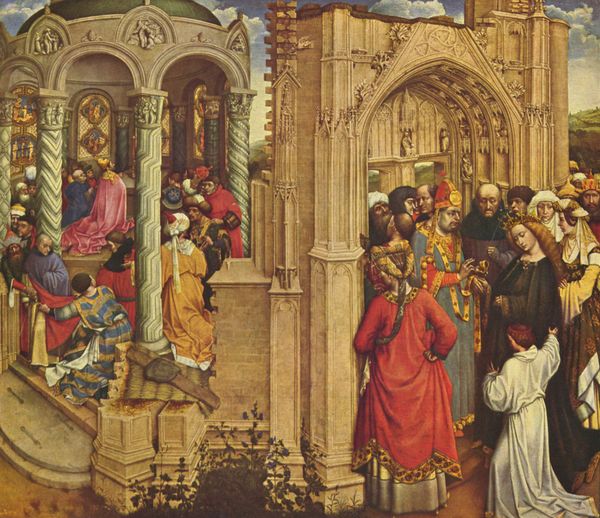
fresco
#
narrative-art
#
fresco
#
oil painting
#
group-portraits
#
history-painting
#
italian-renaissance
Copyright: Public domain
Curator: Editor: Here we have what is thought to be "Loggia (the Founding of Rome)," a fresco painting by Gentile da Fabriano, possibly dating back to the Italian Renaissance. There's an undeniable sense of narrative, like we're witnessing a pivotal moment, but the exact details of this moment are vague and there seems to be different crowds going on. What do you see in this piece, focusing on how it was made and how that impacts our understanding of it? Curator: I see a careful consideration of the means of production, the 'how' over the 'what.' As a fresco, it wasn't simply painted onto a surface, it was integrated into the wall itself, the wall needing to be resurfaced. This demands not only technical skill but a deep connection to the physical, social and temporal constraints of the space where the work would appear. Think about who controlled those materials, who held those skills, and how their labor becomes literally embedded in the very fabric of the building. How does that inform our reading of the "founding of Rome"? Editor: That’s a fascinating perspective! It pushes beyond just interpreting the scene, to also examining who was involved and the value system to produce it. It wasn't a commodity. Curator: Precisely. Also, considering the very process of fresco production--mixing plaster, sketching the underdrawing, painting quickly before the plaster dries--what kind of control over image making, message, and its interpretation, would there have been for people besides the artist? Editor: It feels like, through this lens, we move from passively viewing history as some monolithic event to actively questioning the systems of labor, resources, and authority that shape how that story gets told in the first place. It becomes far more nuanced. Curator: It does. And the fact that it is a "history-painting", we must investigate who decides whose history matters, who funds its portrayal and whose voices get lost. What power structures are at play, that dictate that the founding of Rome and the Renaissance, are memorialized via something so permanent like the laborious, time-consuming frescos that will endure on the walls for decades? Editor: Thanks, I have gained new ideas of how to analyze paintings, keeping in mind not just "the history" but also how art becomes part of a larger picture of the time.
Comments
No comments
Be the first to comment and join the conversation on the ultimate creative platform.

